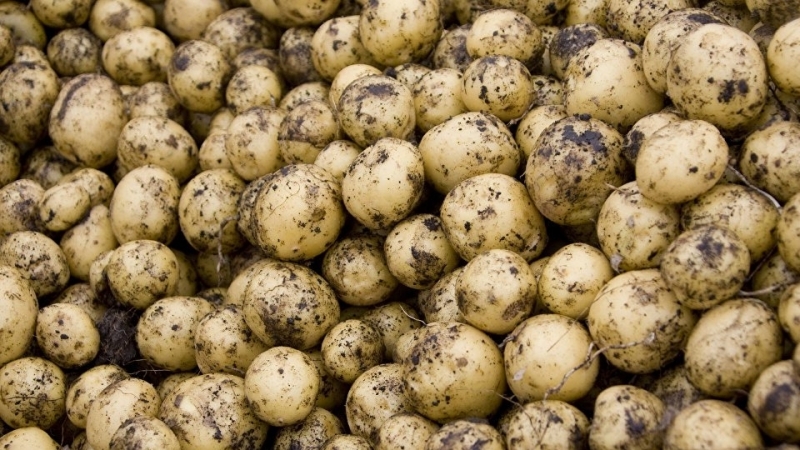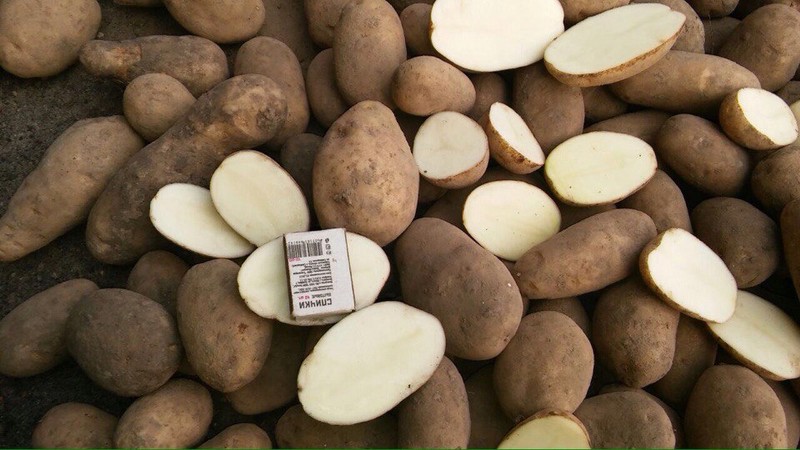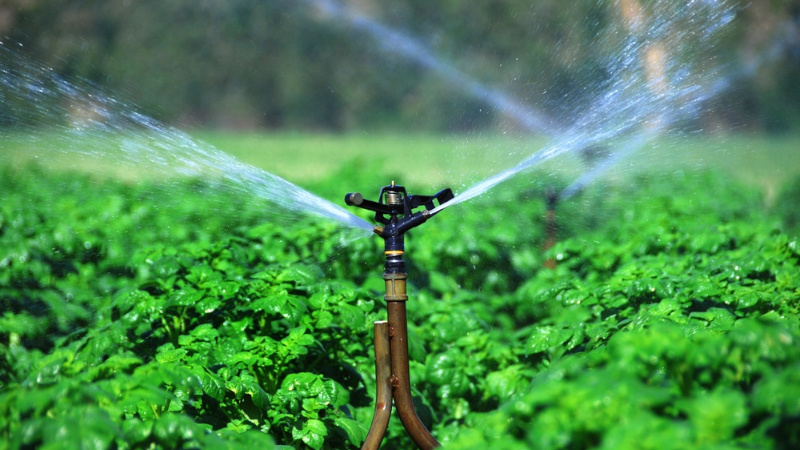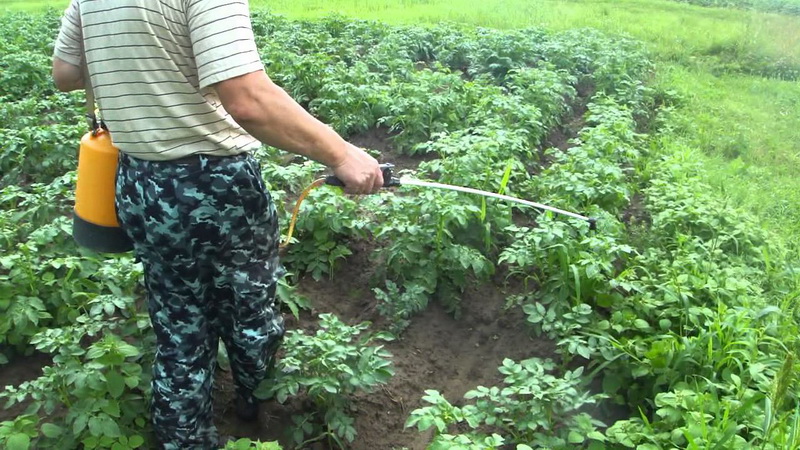What is the caliber of potatoes (table) and what does it mean
There are more than 5,000 varieties of potatoes. They are of early, middle and late ripening. Each is unique in its vitamin and mineral composition, nutritional value.
For the convenience of sorting potatoes, a special indicator is used - caliber. It allows you to conveniently distribute vegetables for later use.
The content of the article
What is potato caliber
According to GOST 7176-2017 “Food potatoes. Technical conditions "potato tubers are calibrated - that is, sorted by size.
What happens

The smallest caliber is less than 3. This means that the transverse diameter of the tuber is up to 30 mm. Such potatoes are called small, they go to animal feed and are used to obtain starch.
Large caliber means 6+. Large tubers are in demand in the food industry.
What does caliber 4, 5, etc. mean?
The well-sold and sought-after potatoes have a caliber of 4+, 5+, 6+.
The average size is 40 and 50 mm in diameter, respectively, these are tubers with a caliber of 4+ and 5+.
Large potatoes has a size of 60 mm and more, caliber - 6+.

Potato caliber table
| Tuber size | Caliber | Diameter (mm) |
| small | < 3 | up to 30 |
| seminal | 3-5 | 30-50 |
| middle | 4-6 | 40-60 |
| large | 6 and> | 60 and> |
How is it determined
Potatoes are stored in equipped vegetable stores until the next harvest... It is sorted according to size before being placed in boxes and containers.
For this, a special installation is used for sorting and sizing vegetable products in sizes up to four fractions. Three sets of frames with cell sizes - small, medium, large, are fixed on the calibrator frame with the help of special clamps.
The largest potatoes - sorted - go to the outfeed conveyors and into separate containers. The rest of the product passes along the conveyor belt and goes to the calibrator. An additional option assumes a grid holder for each fraction. Tubers of the same size are packed in one bag.
According to the standard, the determination of the size of potatoes is carried out using a caliper or square gauge.
The largest transverse diameter is measured with a caliper. An error of ± 1 mm is allowed.
Square gauge holes have dimensions:
- 28 and 55 mm - for varieties with an elongated tuber shape;
- 55 and 60 mm - for round oval shape.
Why is this indicator needed

Small tubers are used for feed and for starch production.
Tubers of caliber 4+, 5+ go on sale.
Companies that buy potatoes have certain requirements for products. Each vegetable is given a characteristic with a description - "quality card".
The requirements for the purchase of potatoes are as follows:
- Caliber. Tubers are not smaller than the stated size.
- External characteristics. The vegetable is dry, without eyes and seedlings, without mechanical damage, the shape of the tubers is even, the color of the peel is not green.
- Internal characteristics. No signs of decay, no black voids.
- Availability of a quality certificate.
Public catering enterprises - canteens, cafes, restaurants - make even greater demands on the quality of the vegetable.
What is important when buying potatoes:
- Variety... For cooking, you need different varieties: crumbly, suitable for frying, deep-fat cooking, etc.
- The size - potato caliber. Different ways of cutting a vegetable are possible at a certain size. To prepare salads and side dishes, tubers of different sizes are required.
- Starch content. For potato puree- varieties with high content. For salads and side dishes, firm flesh and low starch content are important.
- External and internal characteristics.
- Quality certificate.
What is the purpose of the calibration standard:
- tubers of the same size are easier and faster to pack;
- transportation is associated with lower costs and losses;
- vegetables of the same size have a more attractive presentation;
- storage and maintenance are facilitated.
How to grow large-caliber potatoes
To grow large potatoes, certain rules are followed.
Variety selection
Several varieties are taken for planting in order to determine after harvesting which of them gives the largest harvest in a particular area.
Tuber preparation
Disinfect the tubers before planting. There are two ways: sprayed or soaked in a solution of copper sulfate, potassium permanganate, ash.
An incision is made on each tuber. It stimulates the emergence of a large number of shoots and increases the yield by 15%. The incisions are made annular or transverse. They activate the germination of the eyes. If possible, tubers with incisions are left in a warm room for up to 30 days. Then the eyes germinate faster, and the tubers take root better in the ground.
Site requirements
Landings are located from north to south - this allows you to make the most of daylight hours.
Watering

Regular watering is important during the flowering period of the plant. At this time, the formation of tubers takes place, which need water.
Top dressing
Top dressing is necessary to obtain large-caliber tubers.
The first top dressing done during the growth of the leaves. Pale green sprouts signal that the plant needs additional nutrition. Proportions: mullein - 0.5 l, bird droppings - 1 tbsp. l., urea - 1 tbsp. l., water - 10 l. One bush takes about 0.5 liters of solution.
Second time the bushes are fed before the formation of buds. Organic and inorganic additives are used. Composition example: glass of wood ash, 1 tbsp. l. potassium sulfate, a bucket of water.
Last additional meal give to potatoes during flowering. During this period, tubers ripen, so the plant needs enhanced nutrition. Top dressing do 6-7 days after the mass flowering. Solution composition: superphosphate - 2 tbsp. l., chicken manure or mullein in the consistency of gruel - 1 glass, water - 10 l. The components are mixed and poured under a bush, 500 ml each.
If potatoes grow in large areas, then dry fertilizers are used: superphosphate, potassium sulfate, etc.

Cleaning
Digging time depends on the variety. In favorable climatic conditions, early varieties are dug up twice. The main thing is to dig up the first crop on time and correctly. To do this, carefully, without tearing it out of the ground, they dig in the bush and remove the mature tubers. The plant is planted in its original place, watered and hilled. A second crop is harvested closer to autumn.
Conclusion
The caliber of a potato is its size. It depends on the variety and conditions in which it was grown.
The smallest caliber is 3. This means that the transverse diameter of the tuber is less than 30 mm. Such potatoes are used in animal husbandry for livestock feed and in the food industry for starch production.
Calibers 4+ and 5+ are in demand in the trade. It is bought for sale in food chains. The 6+ caliber is suitable for catering establishments. Large tubers are convenient for preparing side dishes, in demand in the production of chips and semi-finished fries.